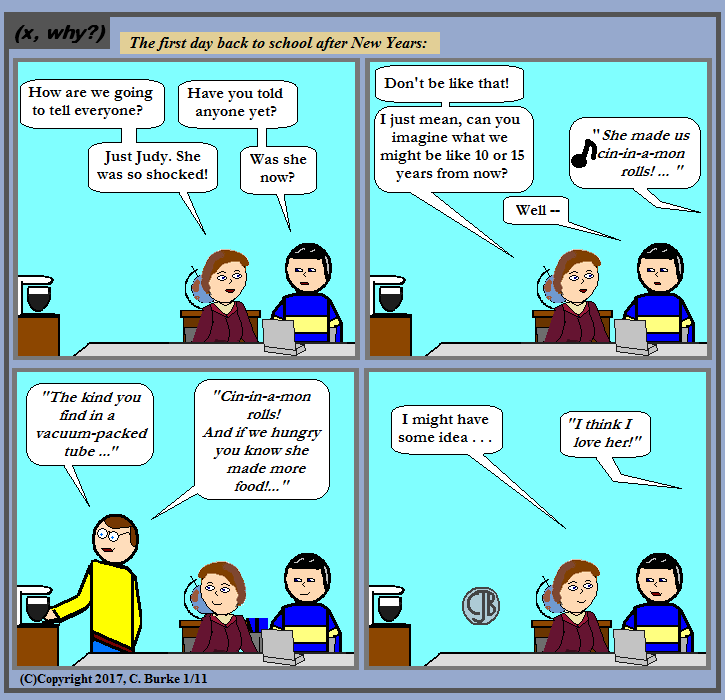Part II was posted here.
January 2017, Algebra I (Common Core), Part III
33. Graph f(x) = | x | and g(x) = -x2 + 6 on the grid below.
Does f(-2) = g(-2)? Use your graph to explain why or why not.
Note that if you explain using substitution instead of graphing, you will not get credit.
The graph looks like this:
So f(-2) = g(-2) because f(-2) = 2 and g(-2) = 2. The two graphs intersect at the point (-2, 2).
34. Two friends went to a restaurant and ordered one plain pizza and two sodas. Their bill totaled
$15.95. Later that day, five friends went to the same restaurant. They ordered three plain pizzas
and each person had one soda. Their bill totaled $45.90.
Write and solve a system of equations to determine the price of one plain pizza.
[Only an algebraic solution can receive full credit.]
Let p = the price of one pizza and let s = the price of one soda. The system of equations would then be:
3p + 5s = 45.90
You can solve this system using elimination by multiplying the first equation by -3, or by substitution if you solve the first equation for p by subtracting 2s from both sides.
Elimination first:
3p + 5s = 45.90
-s = -1.95
s = 1.95
Plug 1.95 into either equation:
p + 2(1.95) = 15.95
p + 3.90 = 15.95
p =12.05
The price of a pizza is $12.05.
Substitution:
3(-2s + 15.95) + 5s = 45.90
-6s - 47.85 + 5s = 45.90
-s - 47.85 = 45.90
-s = -1.95
s = 1.95
Plug 1.95 into either equation:
p + 2(1.95) = 15.95
p + 3.90 = 15.95
p =12.05
The price of a pizza is $12.05.
Yes, that is an unusual amount for a pizza, but they didn't want to make it "obvious". $1.95 is a reasonable price for a soda.
35. Tanya is making homemade greeting cards. The data table below represents the amount she spends
in dollars,f(x), in terms of the number of cards she makes, x.
Write a linear function, j(x), that represents the data.
Explain what the slope and y-intercept of j(x) mean in the given context.
You need to find the slope and the y-intercept, which means the rate of change and the initial value.
Pick any two points on the table. Let's say you hate decimals, so you pick (6, 9) and (10, 12). Rate of change is the difference of the y values divided by the difference of the x-values. That is, (12 - 9) / (10 - 6) = 3 / 4 or .75. (You might want to use the decimal for the calculator in the next step.)
Next, you need the y-intercept. Start with y = mx + b and plug in values for x, y and m:
12 = 7.5 + b
4.5 = b
The function is f(x) = .75x + 4.5
You need to explain the answer in context of the problem. $4.50 is the initial value, the starting cost for making the cards, and $0.75 is the cost per card.
36. Alex launched a ball into the air. The height of the ball can be represented by the equation
h = -8t2 + 40t + 5, where his the height, in units, and t is the time, in seconds, after the ball was launched. Graph the equation from t = 0 to t= 5 seconds.
State the coordinates of the vertex and explain its meaning in the context of the problem.
The graph will look like this:
Notice that the vertex occurs between 2 and 3, so it must be 2.5 (which is exactly in the middle).
To find the height at t=2.5, substitute into the equation, and enter it into your calculator:
h = -8(2.5)2 + 40(2.5) + 5 = 55
The vertex is (2.5, 55). At 2.5 seconds the ball reaches its highest point, which is 55 feet units in the air.
EDIT: the units are "units" not feet. You don't have to write "units", but if you write "feet" you will lose a point for misidentifying the units.
The problem is in neither feet nor meters. A gravity problem dealing using feet would usually start with -16t2. A problem with meters would usually start with a leading coefficient of -4.9 or -5, depending upon the desired precision.
End of Part III
How did you do?
Comments, questions, corrections and concerns are all welcome.
Typos happen.

























